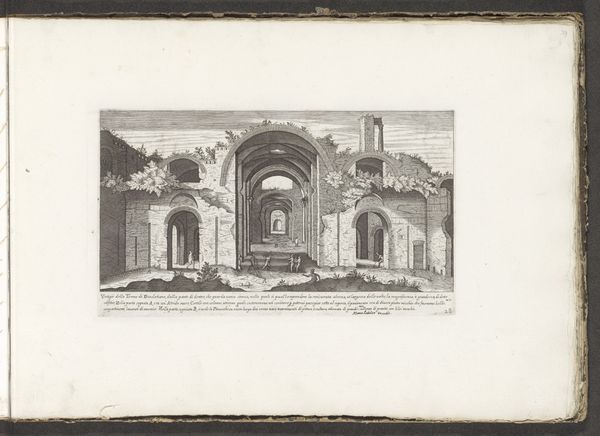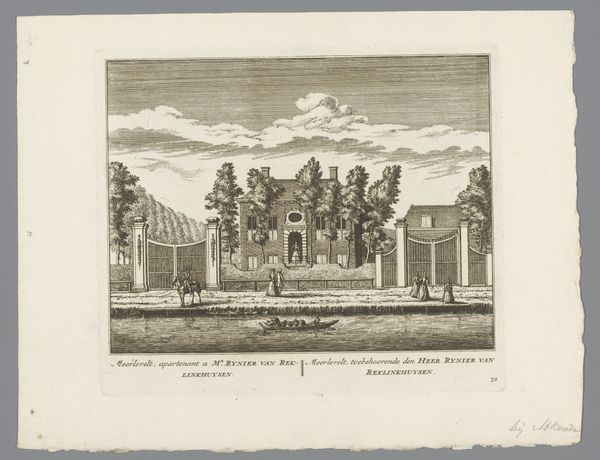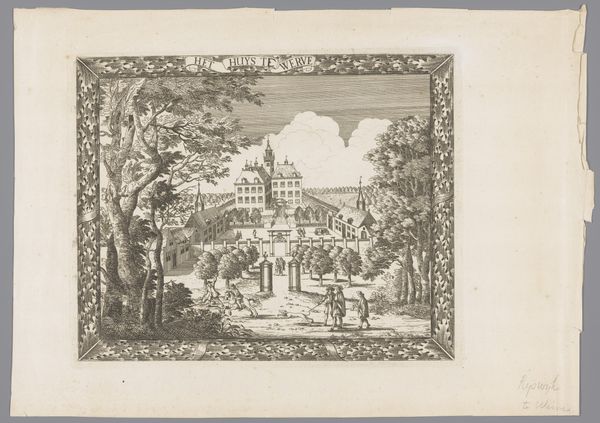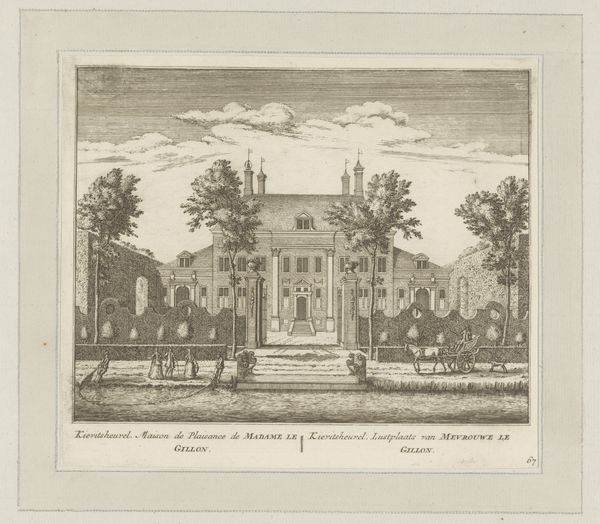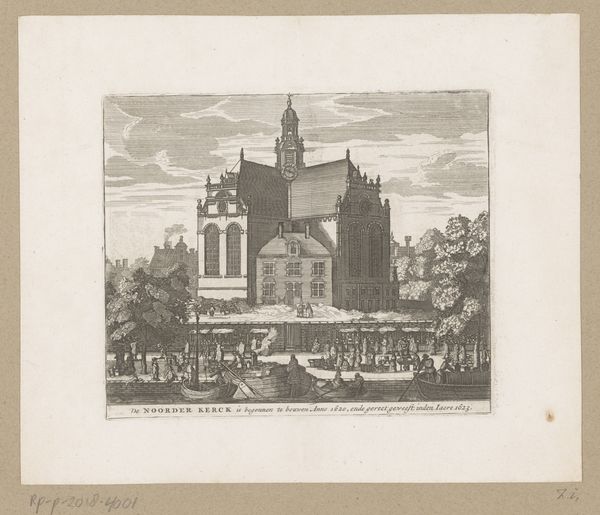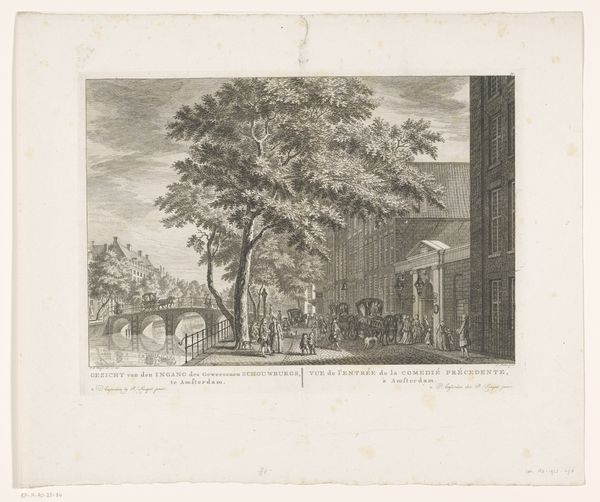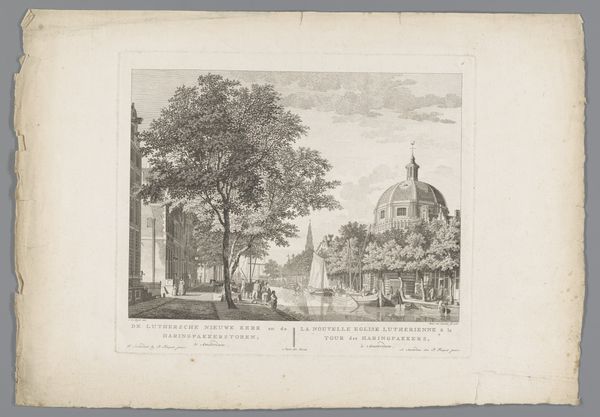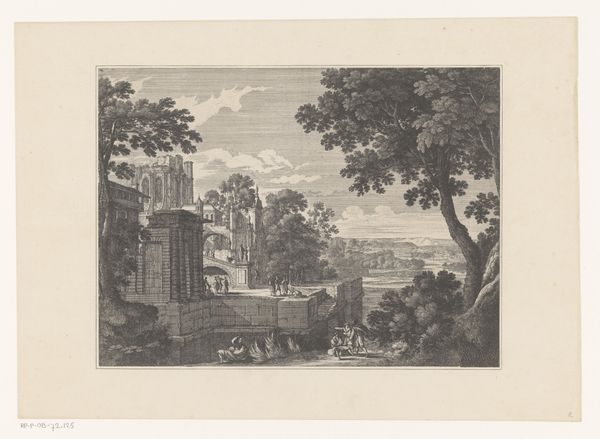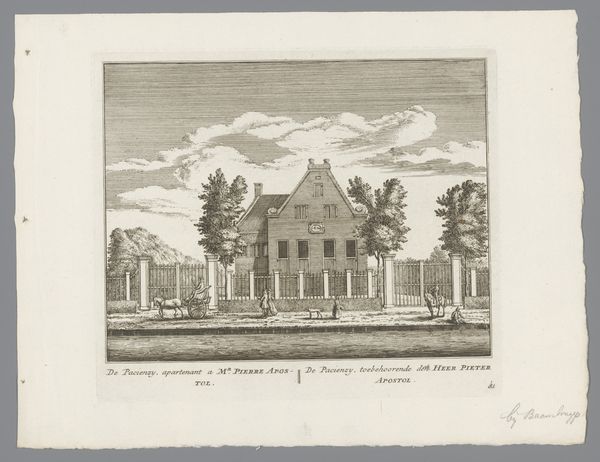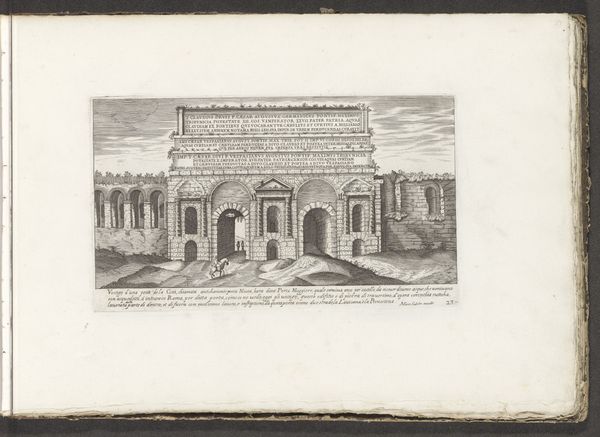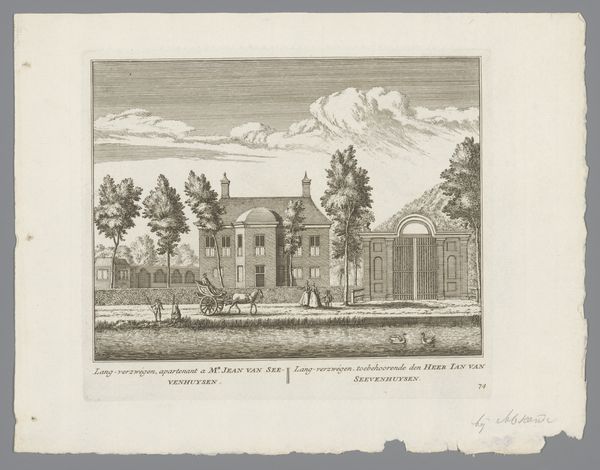
print, engraving
#
baroque
# print
#
old engraving style
#
landscape
#
engraving
Dimensions: height 144 mm, width 255 mm
Copyright: Rijks Museum: Open Domain
Curator: Here at the Rijksmuseum, we're looking at "View of the Grotto of Saint-Cloud," an engraving possibly made between 1648 and 1707 by Adam Perelle. Editor: It's immediately striking, this structured oasis! The rigid grotto stands in contrast with the unruly nature surrounding it. There’s a distinct interplay of light and shadow, achieved through intricate lines and patterns. Curator: The gardens at Saint-Cloud, of which this grotto was a feature, were very important social spaces during the Baroque era. They reflect the control that elites had over their landscape, both literally and metaphorically. Landscape design became an exercise in displaying wealth and power, using symmetry and order. Editor: Exactly. The composition is heavily structured. Note the symmetry, how the trees mirror each other, framing the scene like a stage. And the precise articulation of line, how the engraving captures textures, even the suggestion of light filtering through the leaves. Curator: It’s fascinating to consider this image not just as a depiction of the grotto, but as a curated view intended for a specific audience. The presence of people, elegantly strolling, enjoying the space—it emphasizes the performative aspect of these gardens, meant for leisure and display. Editor: Observe also the tonality: It seems muted, calm and still, and rendered almost entirely in monochrome, which only reinforces that stillness and a timeless feel, pulling one into contemplation with the structure presented. Curator: Yes, this piece can be seen as propaganda; by producing prints, the French Aristocracy created a record and amplified their architectural influence to elite audiences across Europe, spreading its ideals. The Baroque garden becomes another tool within the larger politics of imagery. Editor: Absolutely. Thinking of those visual ideals... Notice the formal relationship between architectural elements. How lines converge, directing our gaze towards the central grotto and even the calculated dispersal of visual weight maintains balance. It all seems so perfectly calibrated. Curator: Examining this work through its history lets us understand both the ambitions and constraints of landscape design in shaping social perception. Editor: It certainly offers a sophisticated orchestration of form, texture, and space to reflect Saint Cloud in such an intimate way. Thank you.
Comments
No comments
Be the first to comment and join the conversation on the ultimate creative platform.
